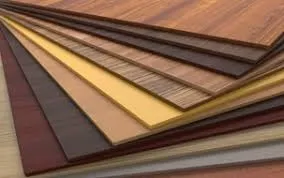- Home
- Understanding the Process of Duplex Paper Production and Its Key Features
Dec . 06, 2024 23:07 Back to list
Understanding the Process of Duplex Paper Production and Its Key Features
The Duplex Paper Manufacturing Process A Comprehensive Overview
Duplex paper, widely recognized for its smooth surface and superior quality, is an essential material in various packaging and printing applications. Its two-layer composition not only enhances its durability but also offers excellent printability, making it a favorite among manufacturers and consumers alike. This article delves into the duplex paper manufacturing process, shedding light on each pivotal step that combines to create this indispensable product.
1. Raw Materials
The manufacturing process of duplex paper begins with the selection of high-quality raw materials. The primary ingredients include bleached chemical pulp and recycled paper fiber. Bleached pulp is sourced from wood, usually from coniferous trees, ensuring the end product is both white and strong. The inclusion of recycled fibers not only boosts sustainability but also reduces setup costs, making it an environmentally friendly option.
2. Pulping Process
The first major step in duplex paper manufacturing is the pulping process. This involves the mechanical or chemical breakdown of the raw materials to separate the fibrous content. In mechanical pulping, wood chips are ground into pulp, retaining most of the lignin, which can affect the brightness. On the other hand, chemical pulping processes involve cooking the wood chips with chemicals, removing lignin and allowing the fibers to be more easily processed. The resulting pulp is then bleached to achieve the desired level of whiteness and brightness, essential for high-quality duplex paper.
3. Fiber Preparation
Once the pulp is ready, it's subjected to a fiber preparation stage. In this phase, various additives may be introduced, such as fillers (e.g., clay, talc) that enhance opacity and provide a smooth finish. Sizing agents are also added to control the paper's absorbency, making it ideal for printing purposes. This stage is critical as it impacts the final characteristics of the duplex paper, ensuring that it performs optimally in its intended applications.
duplex paper manufacturing process product

The next step involves the formation of sheets from the prepared pulp. The wet pulp mixture is spread onto a moving wire mesh, allowing water to drain and gradually forming a sheet of paper. This sheet is then pressed to remove excess water, providing it with additional density. The formation process is vital to achieving the specific thickness and texture needed for duplex paper, which typically has a weight range between 200 to 400 grams per square meter (gsm).
5. Drying Process
After sheet formation, the paper enters the drying stage. The wet sheets pass through heated rollers that evaporate the remaining moisture, resulting in a dry, continuous sheet of duplex paper. Proper drying ensures optimal printability and prevents warping or crumpling during subsequent processing. It is crucial to maintain consistent temperature and pressure during this phase to achieve uniform results.
6. Calendering
To enhance the smoothness and finish of the duplex paper, it undergoes a calendering process. This involves passing the paper through a series of rollers at high pressure, which compresses the fibers and produces a glossy surface. Calendering not only improves printability but also adds to the paper's aesthetic appeal, making it suitable for high-end packaging applications.
7. Cutting and Finishing
Once the duplex paper is fully processed, it is cut into various sizes based on customer requirements. Finishing processes such as coating can also be applied if a specific finish is desired. These processes aid in achieving a final product that meets the diverse needs of the market, ranging from packaging materials to high-quality printed products.
Conclusion
The duplex paper manufacturing process, characterized by multiple stages from pulp preparation to cutting, reflects an intricate blend of technology and craftsmanship. As industries continue to seek sustainable and high-performance materials, duplex paper stands out, offering exceptional quality and versatility. The ongoing advancements in manufacturing techniques promise to further enhance the capabilities and applications of duplex paper, thereby cementing its place in various sectors for years to come. As we look ahead, the focus on sustainable practices will continue to drive innovation within this vital industry, ultimately benefiting both manufacturers and consumers.
Latest news
-
High-Quality Bathroom Cabinet Contact Paper – Durable & Stylish Leading Suppliers, Exporters, Manufacturers
NewsJul.08,2025
-
Premium Wood Contact Paper for Desk – Reliable Suppliers & Exporters
NewsJul.08,2025
-
Premium Contact Paper for Table Top – Durable & Stylish Surface Solution from Leading Manufacturer
NewsJul.07,2025
-
Duplex Board with Grey Back - Reliable Supplier & Competitive Price Manufacturer & Exporter
NewsJul.07,2025
-
Premium White Contact Paper on Cabinets – Trusted Exporters & Suppliers
NewsJul.06,2025
-
High-Quality Duplex Board Packaging for Food Reliable Manufacturer & Supplier
NewsJul.06,2025

